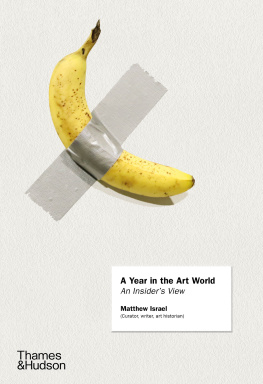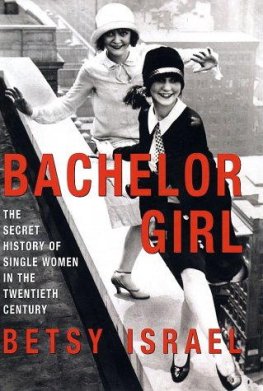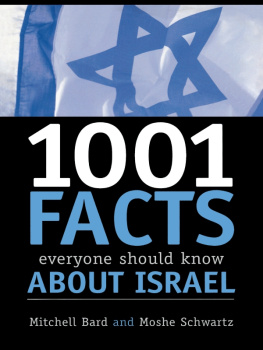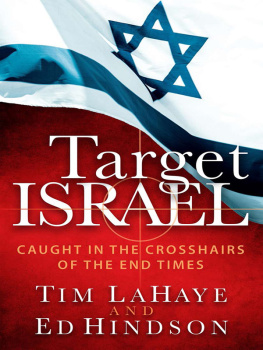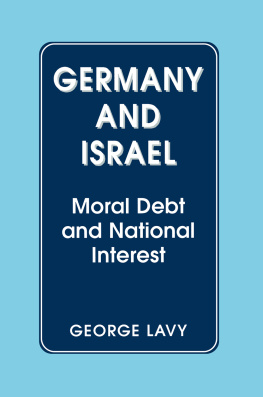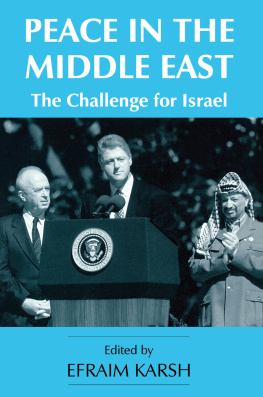


Matthew Israel is a curator, writer and art historian based in New York. He has worked with galleries including Matthew Marks and Gagosian, managed major artist estates and foundations, written widely for the international art press, and spoken internationally about contemporary art and the art world. He received a PhD in History of Art and Archaeology from New York Universitys Institute of Fine Arts and was Head Curator of Artsy. His most recent book is The Big Picture: Contemporary Art in 10 Works by 10 Artists (2017).
Other titles of interest published by
Thames & Hudson include:
The Pursuit of Art:
Travels, Encounters and Revelations
Martin Gayford
With 54 illustrations
Curatorial Activism:
Towards an Ethics of Curating
Maura Reilly
With 107 illustrations
Whos Afraid of Contemporary Art?
Kyung An and Jessica Cerasi
With 40 illustrations
See our websites
www.thamesandhudson.com
www.thamesandhudsonusa.com
This book is for Ben, Amina, and Samara. It would never have happened without all of your love, support, patience and humour.
Contents
A Year in the Art World is an insiders overview of the contemporary art world the people and institutions with a connection to the creation, promotion, exhibition and collection of works of contemporary art. It takes the reader on a journey through fifteen chapters and a calendar year, from an artists studio to an auction house to a storage facility; it features some of the worlds best-known artists, curators, critics and gallerists, and takes in the years most significant art events in cities such as New York, Los Angeles, Paris and Hong Kong.
My aim in this book is to go deep inside whats often regarded as a niche, elitist industry and to present an accessible, engaging and historically informed view of what makes the art world go round as well as to illustrate what people actually do in this world. The book balances overviews of art world professions and institutions with in-depth profiles of individuals, illuminating the details and nuances of their work and exploring what occupies, inspires and frustrates them.
This book is the product of obsession, experience and curiosity. I have been completely enamoured by the contemporary art world since I first came into contact with it as an undergraduate; even now, having spent almost twenty years within it, Im still interested in figuring out its inner workings. Writing about it is also, most importantly, a way for me to offer something I wish Id had when I first ventured into this industry. At that point, even though I had grown up creating art and identifying as artistic and creative, I was not part of a family or community engaged with art, so I had very little sense of which institutions were significant, the roles people played within them, or how the institutions and the people related to each other. I also didnt really understand how an artists career functioned, or many of the variables that might play into them becoming well known or not.
Ive since worked for galleries (like Matthew Marks and Gagosian), as a freelance writer (for magazines such as Artforum, Artnews and Art in America), for collectors, and then as a researcher for museums (such as the New Museum). I spent six years getting a PhD in modern and contemporary art at NYUs Institute of Fine Arts, with the aim of becoming a professor. I also taught art history and contemporary art courses at NYU and at Parsons, managed the estates of two artists (Peter Hujar and Felix Gonzalez-Torres), served on an authentication committee (for the Keith Haring Foundation) and then entered the world of art online, at Artsy, the contemporary art education and marketplace site. I spent eight and a half years there, and in that time published my previous two books (Kill for Peace: American Artists Against the Vietnam War and The Big Picture: Contemporary Art in 10 Works by 10 Artists). I hope this book can bring together some of what Ive learned in all that time and offer insight to anyone with an interest in working in the art world or simply understanding how it operates.
People do many things in the art world, and while there isnt space here to tell all of their stories, Ive tried to tell a lot of them. The book begins in the New York studio of contemporary artist Taryn Simon. It then takes the reader to Los Angeles, Hong Kong, Paris and other art centres, exploring different facets of the art world: art fabrication, galleries, museums, art fairs, artists estates and foundations, art writing, curating, biennials, art schools, art online, art advising, auctions, conservation and finally storage, shipping and installation. Some of the people I speak with or discuss, such as Jeff Koons or Klaus Biesenbach, are high-profile figures in the art world and to an extent in the wider culture; others are less well known, but still play essential parts. Art collectors, whose influence is key to so many elements of how the art world operates, are present throughout the book rather than being covered in a single chapter.
In the process of writing this book Ive tried to push back against some of the inequality of the art world by highlighting the work of female-identifying and historically under-represented artists and art world professionals. At the same time, because the book is largely concerned with shedding light on current arenas of art world power and the people who control the majority of art world capital, it inevitably reflects inequalities. These include, but are not limited to, a lack of diversity among artists and art buyers as well as others in powerful professional roles.
Its important to me that the reader understands the current power make-up of the art world, which can be sketched out in a few statistics about the US art industry. A 2016 study found that among the 1,300 artists represented at the forty-five most successful New York City galleries, 80.5 per cent were white (and if just US artists were considered, that figure rose to 88.1 per cent). African Americans made up only 8.8 per cent of artists represented. Consider that, by comparison, whites are 64 per cent of the US population and African Americans are 16 per cent; and note that Latinx only made up 1.2 per cent of represented artists, while being 16 per cent of the national population. While there have been changes in the last decade with top galleries taking on more female and non-white artists, women and minorities being hired at larger percentages in museums and into top art world positions, and art buyers diversifying nationally, ethnically, culturally and gender-wise recent data makes it clear that the gains have been limited. There is also a need in the US not only to diversify traditionally white-dominated institutions, but to invest in the leadership and creative output of institutions run by or conceived to primarily serve non-white people. On the whole, such institutions are still significantly underfunded. Every action taken in relation to the art world, from financial contributions to showing an artist to writing an article or a book, is an opportunity to raise awareness and encourage further action.
Next page
